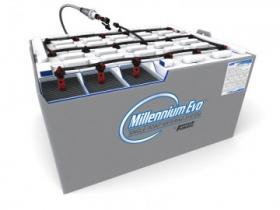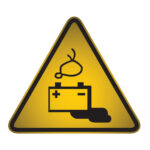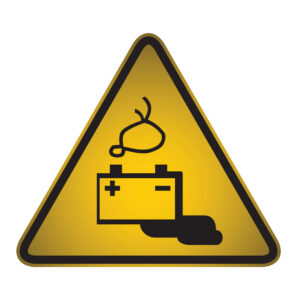Businesses rely on their Industrial motive equipment, such as forklifts, pallet jacks, and aerial lifts, to perform efficiently and to last. To ensure optimal performance and longevity of this equipment, proper maintenance is crucial.
One essential way to do this is through battery watering. Battery watering systems have emerged as an efficient and reliable solution for industrial applications allowing businesses to maintain optimal battery functionality and life in an efficient manner.
In this blog, we will explore the importance of battery watering systems and how they contribute to the overall performance and lifespan of batteries used in industrial motive equipment.
The Importance of Battery Maintenance
Batteries are the heart of industrial motive equipment, providing the necessary power to perform a wide range of tasks. However, batteries are subject to wear and tear, and their performance can decline over time if not properly maintained. One critical aspect of battery maintenance is ensuring that the water levels within the battery cells are maintained at the optimal level.
Battery watering refers to the process of replenishing the water levels within the individual cells of a battery. It is an essential maintenance task for lead-acid batteries, commonly used in industrial motive equipment like forklifts, golf carts, and aerial lifts.
Proper watering of batteries helps to:
1. Prevent Dry Cells: Insufficient water levels can lead to the formation of dry cells within the battery, which can result in irreparable damage and reduced battery life. By maintaining proper water levels, the battery’s active materials remain fully immersed, promoting efficient chemical reactions and prolonging battery life.
2. Control Temperature: Adequate water levels in the battery help regulate operating temperatures. During discharge, batteries generate heat, and maintaining proper water levels facilitates efficient heat dissipation. This prevents excessive overheating and the subsequent risk of battery failure or damage.
3. Ensure Optimal Electrolyte Concentration: The water in the battery electrolyte solution is gradually lost through the charging and discharging process. Regular watering helps maintain the appropriate concentration of electrolytes, ensuring the battery’s chemical reactions occur optimally.
The frequency of battery watering depends on various factors, including the battery’s usage, ambient temperature, and charging patterns. Typically, it is recommended to check the water levels in the battery cells on a regular basis, especially during routine battery maintenance. If the water levels are below the recommended level, distilled water should be added to bring them back to the appropriate level.
To simplify and streamline the battery watering process, battery watering systems have been developed.
Battery Watering Systems: An Overview

Battery watering systems are designed to simplify the process of maintaining water levels in industrial motive equipment batteries. They are specifically engineered for efficiency, accuracy, and ease of use, reducing the potential for human error and ensuring consistent results.
Components of a typical battery watering system include:
1. Watering Gun: A handheld tool equipped with a nozzle and flow control mechanism. It allows precise and controlled filling of water into battery cells.
2. Water Supply: A dedicated water source, often connected to a reliable water supply system. It can be as simple as a hose connection or a more advanced automated system.
3. Water Distribution System: A network of tubing and connectors that deliver water from the water supply to the watering gun. These systems are designed to fit different battery configurations and ensure even distribution of water among the cells.
Knowing what components are included in a battery watering system will help during the purchase process.
Benefits of Battery Watering Systems
Batteries can be watered manually, but there are drawbacks to doing so. For many businesses, battery watering systems are the most efficient option as they offer several advantages over manual methods. Here are some key reasons to use a battery watering system:
1. Time Efficiency: Battery watering systems significantly reduce the time required to manually check and fill water in each battery cell. With a watering system, the process becomes more streamlined, allowing operators to focus on other important tasks.
2. Consistency and Accuracy: Automated watering systems deliver the precise amount of water required for each cell, ensuring consistent electrolyte levels throughout the battery. This eliminates the risk of over or underfilling, which can adversely affect battery performance and lifespan.
3. Reduced Maintenance Costs: By optimizing the watering process, these systems minimize the chances of battery damage due to overfilling or dry cells. This leads to improved battery life and reduced maintenance costs over time.
4. Enhanced Safety: Battery watering systems minimize exposure to potentially hazardous battery acid by providing sealed and controlled water transfer mechanisms. This improves safety for operators and reduces the risk of accidents.
Using a battery watering system offers efficiency, accuracy, and safety advantages over manual watering methods. It ensures consistent water levels, reduces human error, promotes battery longevity, and ultimately contributes to the overall performance and cost-effectiveness of industrial motive equipment batteries.
Types of Battery Watering Systems

When exploring battery watering as an option, you will find that there is no one size fits all system. Battery watering systems come in various types, each designed to cater to different needs and battery configurations. Let’s discuss some of the common types of battery watering systems used in industrial motive equipment:
Manual Battery Watering Systems:
Manual watering systems consist of a watering gun or a hand pump that allows operators to manually fill each battery cell with water. These systems are typically straightforward and inexpensive. However, they require manual labor and can be time-consuming, especially for larger battery banks with numerous cells. Manual systems rely on the operator’s judgment and can be prone to human error, leading to inconsistent watering levels.
Single-Point Battery Watering Systems:
Single-point watering systems utilize a manifold or a filling tube connected to a single point on the battery. This centralized system simplifies the watering process by allowing water to be distributed evenly among all battery cells simultaneously. Operators connect a water supply source, such as a hose or a dedicated water line, to the manifold, which then distributes the water to all the cells. Single-point systems are more efficient than manual systems as they reduce the time required for watering and ensure consistent water levels among the cells.
Flip-Top Battery Watering Systems:
Flip-top watering systems employ individual flip-top caps or valves on each battery cell. These caps are connected to a manifold, which can be pressurized to release the correct amount of water into the cells. The manifold is connected to a water supply source, allowing easy and precise filling of each cell. Flip-top systems offer better accuracy and control compared to manual or single-point systems. They minimize the risk of over or underfilling and provide a sealed and secure watering solution.
Automatic Battery Watering Systems:
Automatic watering systems are the most advanced and efficient option available. These systems utilize a combination of valves, sensors, and controllers to automate the watering process. The system monitors the water levels in each cell and automatically fills or tops up the cells as needed. Automatic systems often employ float or pressure sensors to determine the water levels and control the water flow. They can be connected to a centralized water supply or integrated with an existing water management system. Automatic watering systems eliminate the need for manual intervention and offer the highest level of accuracy, consistency, and convenience.
It’s important to note that different manufacturers may have their own variations and proprietary designs for battery watering systems. The choice of system depends on factors such as the battery configuration, the size of the battery bank, the specific needs of the application, and budget considerations.
Ultimately, selecting the right type of battery watering system is crucial to ensure efficient and consistent maintenance of battery water levels in your industrial equipment, promoting optimal performance and extending battery life.
Finding the right battery watering system
Battery watering systems play a vital role in maintaining performance and extending the lifespan of batteries used in industrial motive equipment. By ensuring proper water levels within battery cells, these systems contribute to enhanced efficiency, reduced downtime, and lower maintenance costs.
Investing in a quality battery watering system can provide long-term benefits, safeguarding the longevity and reliability of industrial batteries. As technology continues to evolve, we can expect further advancements in battery watering systems, making battery maintenance an even more streamlined and efficient process.
To find the right battery system for your batteries, it’s best to speak with an industrial battery supplier. They can help provide the best system for your specific batteries and needs.





